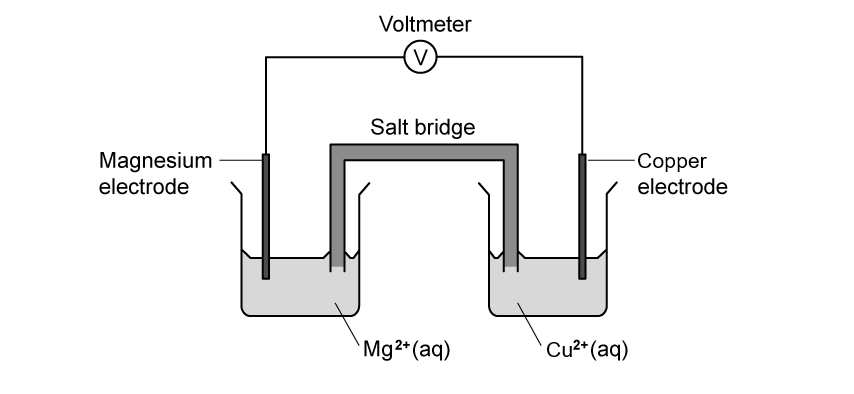A student investigated the enthalpy change of neutralisation by gradually adding aqueous potassium hydroxide (KOH) to a known volume of aqueous ethanoic acid (CH3COOH) in a polystyrene cup. A temperature probe recorded the temperature after each addition.
The following data were obtained:
Volume of KOH added (±0.1 cm3) | 0.0 | 5.0 | 10.0 | 15.0 | 20.0 | 25.0 | 30.0 | 35.0 |
|---|---|---|---|---|---|---|---|---|
Temperature (±0.1 °C) | 22.5 | 24.7 | 26.5 | 27.8 | 28.6 | 28.9 | 28.7 | 28.4 |
(i) Describe the overall trend in the temperature as the volume of KOH increases.
[1]
(ii) Suggest a reason for the slight decrease in temperature after 25.0 cm3 of KOH have been added.
[1]
A graph of temperature against volume of KOH added was plotted.

Estimate the volume of KOH added at which neutralisation is complete, based on the data.
The concentration of the ethanoic acid was 1.00 mol dm-3, and the volume used was 25.0 cm3.
Determine the number of moles of ethanoic acid in the cup before titration began.
The student forgot to record the concentration of the KOH solution.
Describe how the temperature data and the enthalpy change of neutralisation (ΔHneut = –57.0 kJ mol-1) can be used to determine the concentration of the KOH solution.
Identify one assumption made in the method described in (d), and explain how it could affect the final value obtained.
Suggest two improvements to the experimental method to reduce heat loss to the surroundings.
Did this page help you?




